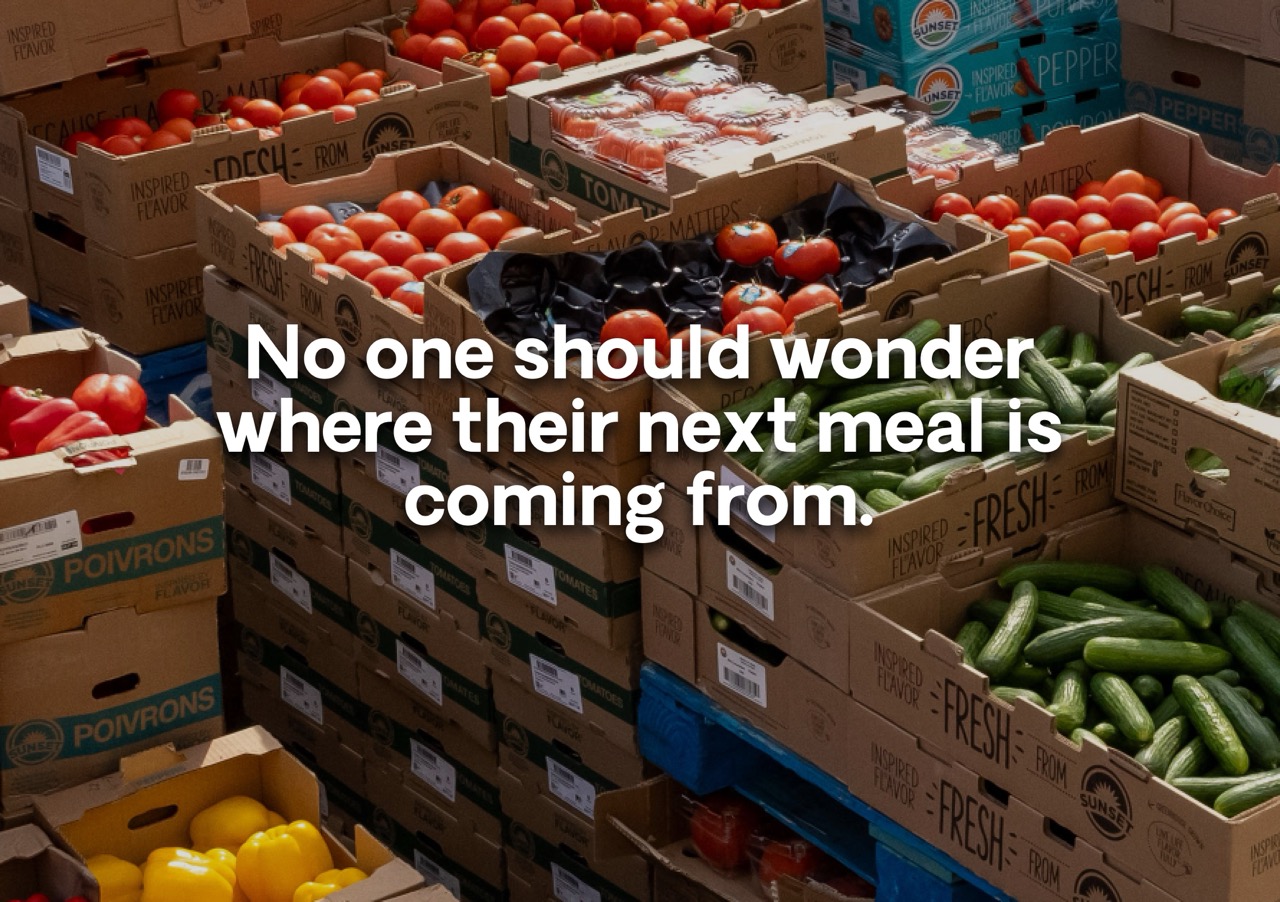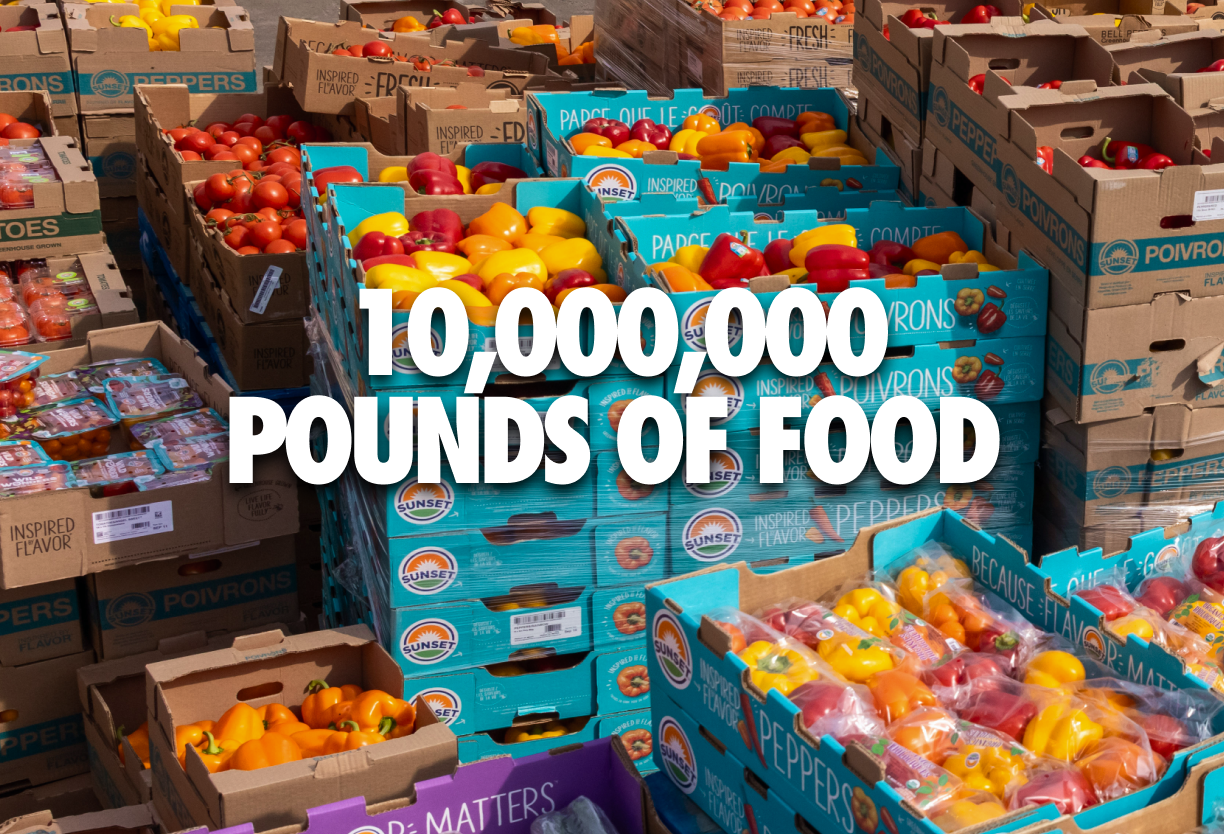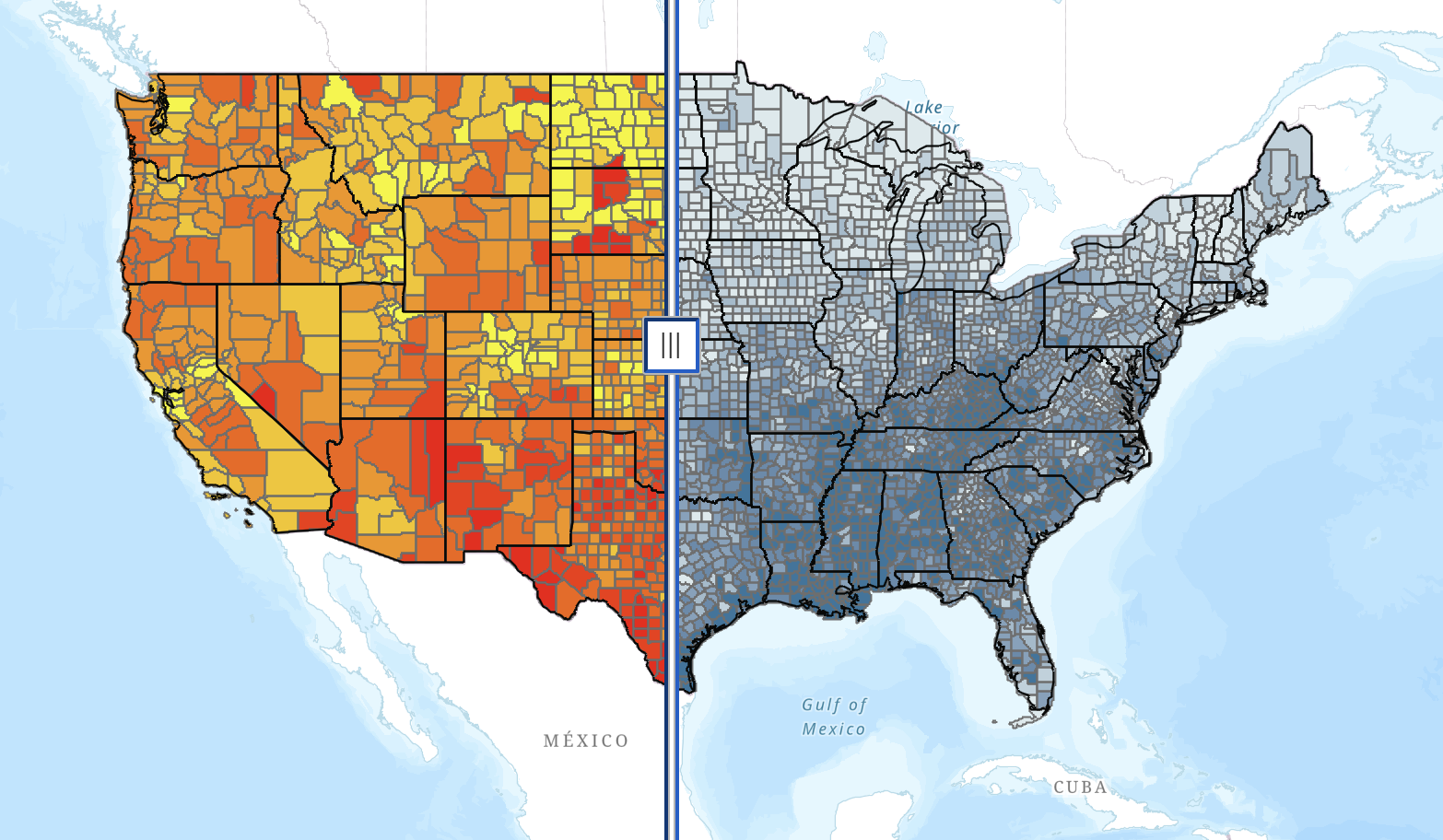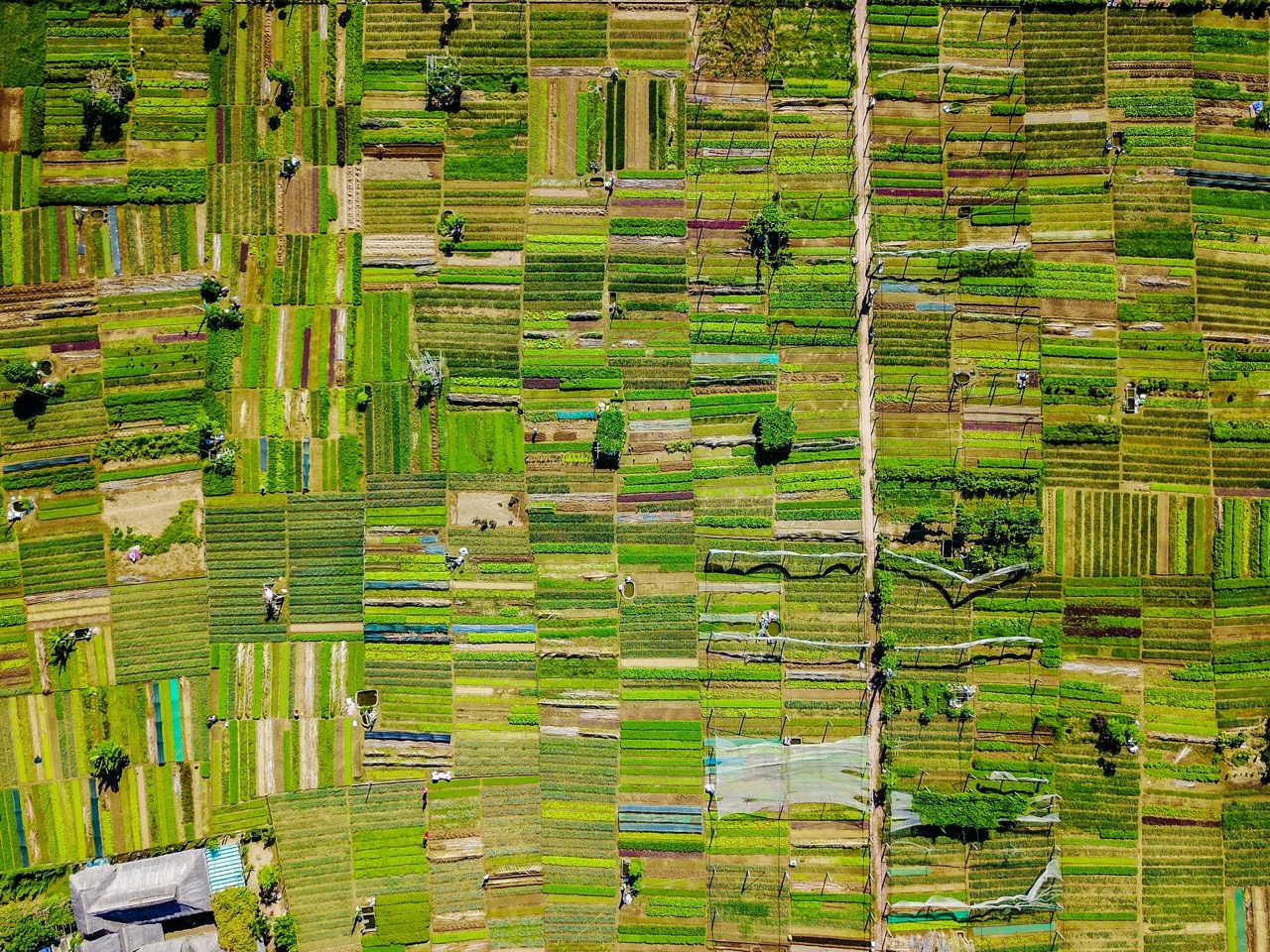In April, our team met McLean Beckwith, a 25-year-old fifth generation farmer continuing his family’s legacy in agriculture. His family’s operation, Beckwith Produce, donated 100 acres of beautiful cabbage that were not going to be harvested due to small imperfections that would make them difficult to sell.
.png)

Our team had the opportunity to shake McLean’s hand and admire his family’s impressive cabbage fields, located in the Rio Grande Valley about a mile from the border with Mexico. As far as the eye could see lay rows of big, leafy cabbages. As a girl from Connecticut, I had never before seen agriculture at this scale.
Farmlink harvested, packed and transported this cabbage with the help of our third party partners. With McLean’s generosity, we are on track to recover 1 million+ pounds of cabbage.
We partnered with an El Paso hunger-fighting charity who distributed the red and green cabbages to Texas families, many of whom are BIPOC. Itzel Delgado and her team at El Pasoans Fighting Hunger Food Bank helped this fresh produce reach communities who have seen rates of food insecurity greater than 15%.
.png)
The story of these 100 acres of cabbage illustrates what Farmlink calls our “complete harvest” program. There is surplus produce at every juncture in the supply chain – including the produce that does not even make it out of the ground. By moving fresh, nutritious food from the soil all the way to outstretched hands, Farmlink covers a crucial niche within food recovery.
It’s exciting to work closely with other young people dedicated to improving our food system. In his truck on the way to his family’s fields, McLean told me there was nothing he’d rather do than work in agriculture. He went on to express his enthusiasm for Farmlink’s efforts to work alongside farmers. We are proud to be the connector between Beckwith Produce and folks fighting hunger in Texas. I, for one, can't wait to watch this fledgling partnership grow.
Take care and cabbage on,
Carson Halabi
< Back
In April, our team met McLean Beckwith, a 25-year-old fifth generation farmer continuing his family’s legacy in agriculture. His family’s operation, Beckwith Produce, donated 100 acres of beautiful cabbage that were not going to be harvested due to small imperfections that would make them difficult to sell.
.png)

Our team had the opportunity to shake McLean’s hand and admire his family’s impressive cabbage fields, located in the Rio Grande Valley about a mile from the border with Mexico. As far as the eye could see lay rows of big, leafy cabbages. As a girl from Connecticut, I had never before seen agriculture at this scale.
Farmlink harvested, packed and transported this cabbage with the help of our third party partners. With McLean’s generosity, we are on track to recover 1 million+ pounds of cabbage.
We partnered with an El Paso hunger-fighting charity who distributed the red and green cabbages to Texas families, many of whom are BIPOC. Itzel Delgado and her team at El Pasoans Fighting Hunger Food Bank helped this fresh produce reach communities who have seen rates of food insecurity greater than 15%.
.png)
The story of these 100 acres of cabbage illustrates what Farmlink calls our “complete harvest” program. There is surplus produce at every juncture in the supply chain – including the produce that does not even make it out of the ground. By moving fresh, nutritious food from the soil all the way to outstretched hands, Farmlink covers a crucial niche within food recovery.
It’s exciting to work closely with other young people dedicated to improving our food system. In his truck on the way to his family’s fields, McLean told me there was nothing he’d rather do than work in agriculture. He went on to express his enthusiasm for Farmlink’s efforts to work alongside farmers. We are proud to be the connector between Beckwith Produce and folks fighting hunger in Texas. I, for one, can't wait to watch this fledgling partnership grow.
Take care and cabbage on,
Carson Halabi
Cabbage Patch Kids: 100 Acres of Cabbage in Texas
El Paso, Texas
In April, our team met McLean Beckwith, a 25-year-old fifth generation farmer continuing his family’s legacy in agriculture. His family’s operation, Beckwith Produce, donated 100 acres of beautiful cabbage that were not going to be harvested due to small imperfections that would make them difficult to sell.
.png)

Our team had the opportunity to shake McLean’s hand and admire his family’s impressive cabbage fields, located in the Rio Grande Valley about a mile from the border with Mexico. As far as the eye could see lay rows of big, leafy cabbages. As a girl from Connecticut, I had never before seen agriculture at this scale.
Farmlink harvested, packed and transported this cabbage with the help of our third party partners. With McLean’s generosity, we are on track to recover 1 million+ pounds of cabbage.
We partnered with an El Paso hunger-fighting charity who distributed the red and green cabbages to Texas families, many of whom are BIPOC. Itzel Delgado and her team at El Pasoans Fighting Hunger Food Bank helped this fresh produce reach communities who have seen rates of food insecurity greater than 15%.
.png)
The story of these 100 acres of cabbage illustrates what Farmlink calls our “complete harvest” program. There is surplus produce at every juncture in the supply chain – including the produce that does not even make it out of the ground. By moving fresh, nutritious food from the soil all the way to outstretched hands, Farmlink covers a crucial niche within food recovery.
It’s exciting to work closely with other young people dedicated to improving our food system. In his truck on the way to his family’s fields, McLean told me there was nothing he’d rather do than work in agriculture. He went on to express his enthusiasm for Farmlink’s efforts to work alongside farmers. We are proud to be the connector between Beckwith Produce and folks fighting hunger in Texas. I, for one, can't wait to watch this fledgling partnership grow.
Take care and cabbage on,
Carson Halabi
.png)







.svg)
.svg)
.svg)